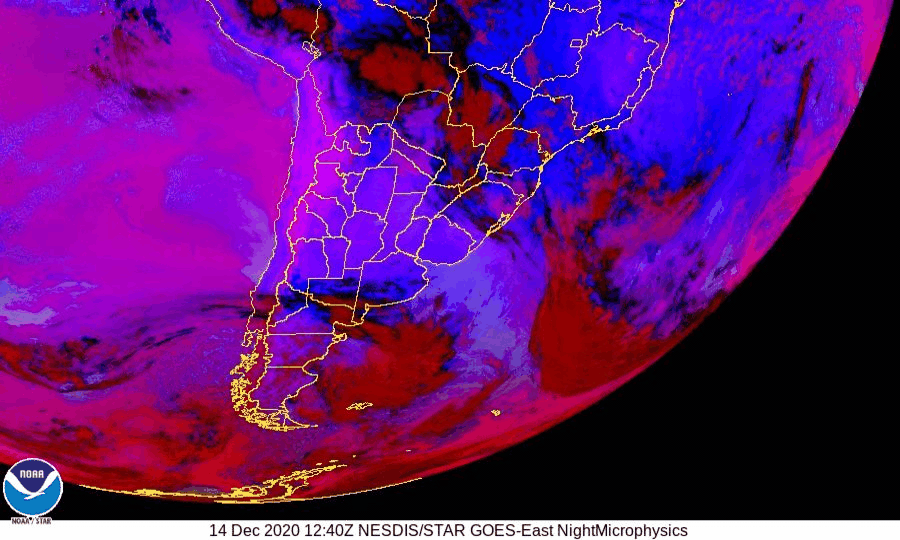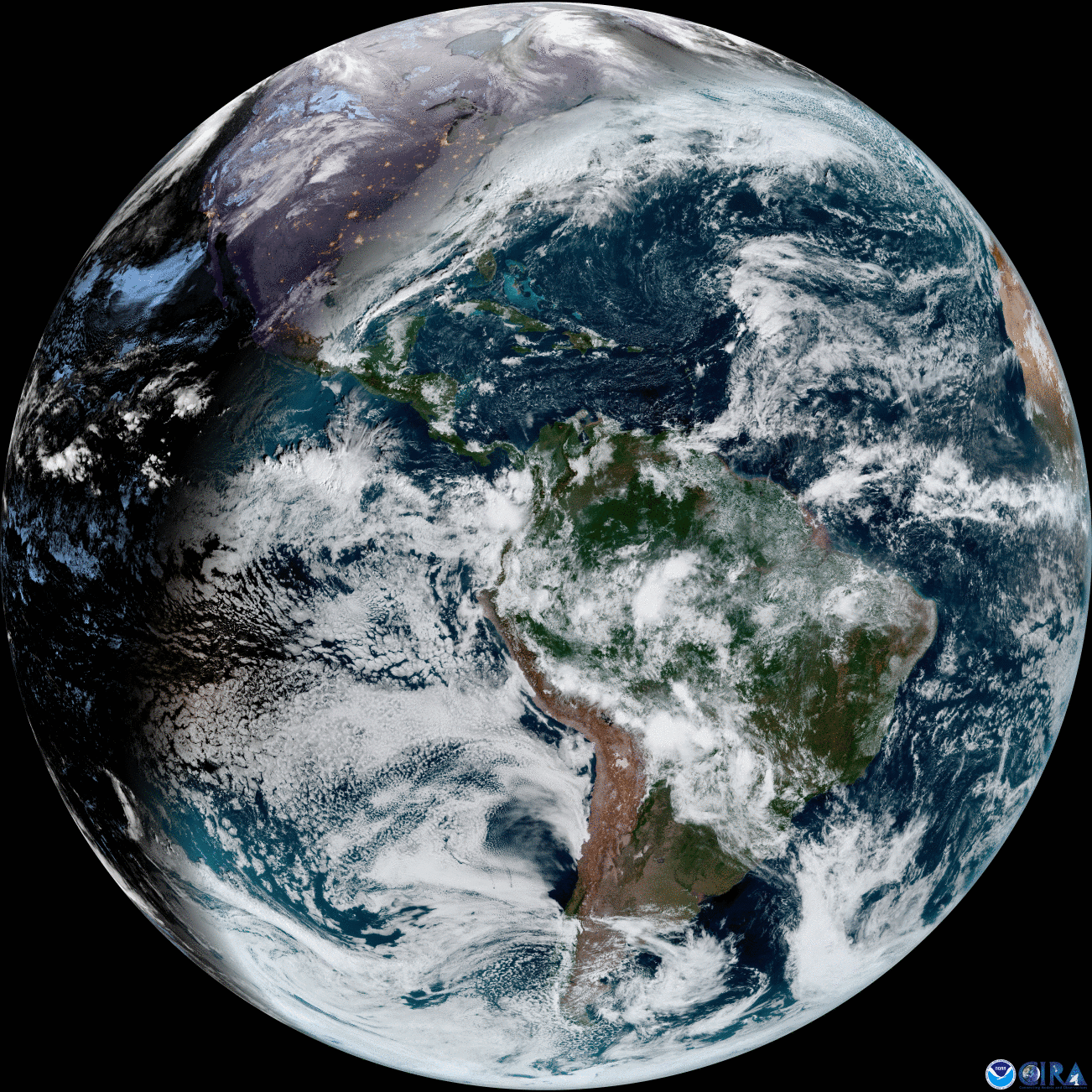
Yesterday’s total solar eclipse provided a spectacular show for many people in parts of South America, where the moon temporarily moved in front of the sun and blocked out its light. NOAA’s GOES East satellite had a birds-eye view from above, and the 16 channels of its Advanced Baseline Imager (ABI) helped us “see” the event in different ways.
The image above was captured via Nighttime Microphysics RGB. This imagery product was designed to help differentiate low clouds and fog at night, which is often a challenge, by enhancing warm areas where fog is more likely. It also allows us to quickly identify other cloud types in the mid and upper atmosphere. Although this imagery was captured during the day, the eclipse can still be seen as if it was under the clouds due to the notable change in the sun’s reflectance on the Earth’s surface. The bright spot you see moving across the Southern Hemisphere is the shadow of the moon.
Below, the eclipse can be seen in Geocolor , which utilizes five channels to provide as close an approximation to how the human eye would observe it during the day:

GeoColor view of total solar eclipse on Dec. 14, 2020 via GOES East.
The GOES East geostationary satellite, also known as GOES-16, keeps watch over most of North America, including the continental United States and Mexico, as well as Central and South America, the Caribbean, and the Atlantic Ocean to the west coast of Africa. The satellite's high-resolution imagery provides optimal viewing of severe weather events, including thunderstorms, tropical storms, and hurricanes.This imagery was downloaded from the SLIDER site, operated by our partners at theCooperative Institute for Research in the Atmosphere (CIRA).
